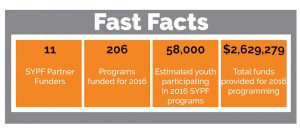“Partner” and “Collaborate” are key buzzwords in the nonprofit sector. The partnership goes beyond organizations administering programs and services; it extends to the funders awarding grants. Funders should collaborate as well, and after years of encouraging grantees to partner, funders are now embracing collaboration.
 Funding in the non-profit world can be siloed, with organizations often competing for limited funding for similar programs or services. At the same time, many funders focus on similar issues and have a common desire to make a difference. An after-school youth tutoring program can easily apply to a dozen funders seeking resources for their program because all of those funders have some interest in youth development and education. This means the after-school program is completing twelve separate grant applications requesting similar information in a slightly different package. Some funders are taking note of this trend and working collaboratively to support common causes.
Funding in the non-profit world can be siloed, with organizations often competing for limited funding for similar programs or services. At the same time, many funders focus on similar issues and have a common desire to make a difference. An after-school youth tutoring program can easily apply to a dozen funders seeking resources for their program because all of those funders have some interest in youth development and education. This means the after-school program is completing twelve separate grant applications requesting similar information in a slightly different package. Some funders are taking note of this trend and working collaboratively to support common causes.
The idea that funders can significantly impact their resources by working together rather than independently is enticing. In Central Indiana, this is precisely what has happened through the launching of the Summer Youth Program Fund. The Summer Youth Program Fund (SYPF) is a collaborative effort among funders who support organizations that provide summer programming for Marion County youth. The funding effort is made up of 11 funding partners (public and private) who support over 200 summer youth programs in Marion County. These individual funders have come together with a common interest to support programs working with youth over the summer.
Benefits When Funders should Collaborate in Funding Partnerships:
- Efficiency for the grantees. The grantees complete one application to be considered for all funding opportunities. Thus, the grantees can spend more time on their programming, staff development, and application writing.
- Collective impact. Through a unified application, the funders can clarify and unite the intended focus, goals, and outcomes, which could lead to a more significant impact on the community.
- Improved programming. By working together, the funders could share capacity-building resources, such as combined professional development and technology, made available to the grantees.
- Accountability and monitoring. With a unified grant application and a clear focus on the services, the evaluation, monitoring, and reporting are transparent and upfront. Joint assessments and evaluation tools could be shared with grantees for implementation.

Collaborative funding certainly has several benefits for the organizations receiving funding and the funders. If a funder is interested in a collaborative, there are some lessons learned to consider:
- Define your goals
- Establish operational procedures (e.g., application process, grantmaking, contracts)
- Identify affinity funders to potentially join the collaboration and share a common interest
- Keep the focus on the grantees and adding value to the grantmaking process
GrantCraft, a service of the Foundation Centers, has created a Guide on Funder Collaboratives: Why and How Funders Work Together. There are some great strategies and resources to help guide the process. We have worked with funders to develop and manage their grantmaking process. If you would like to talk about enhancing your current grantmaking program or exploring a funder collaboration, call or email us! We would love to help you think through the process and see how we can improve your impact.
